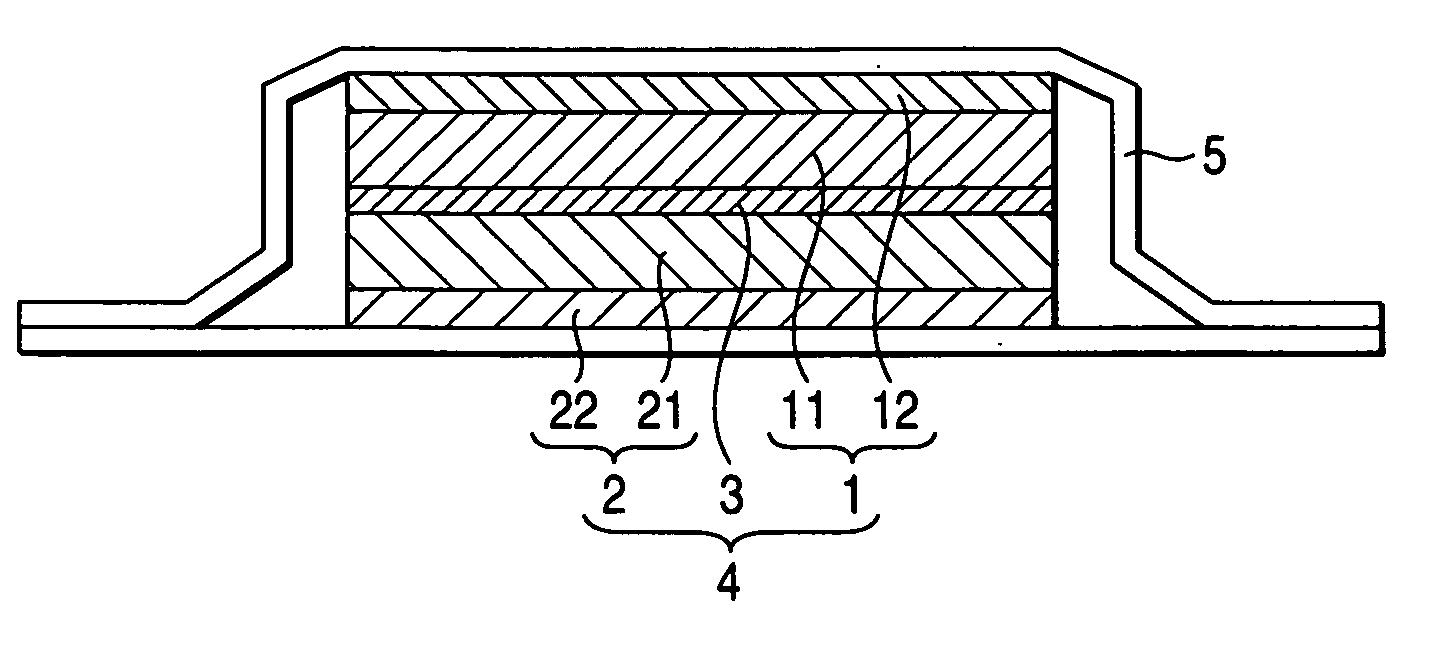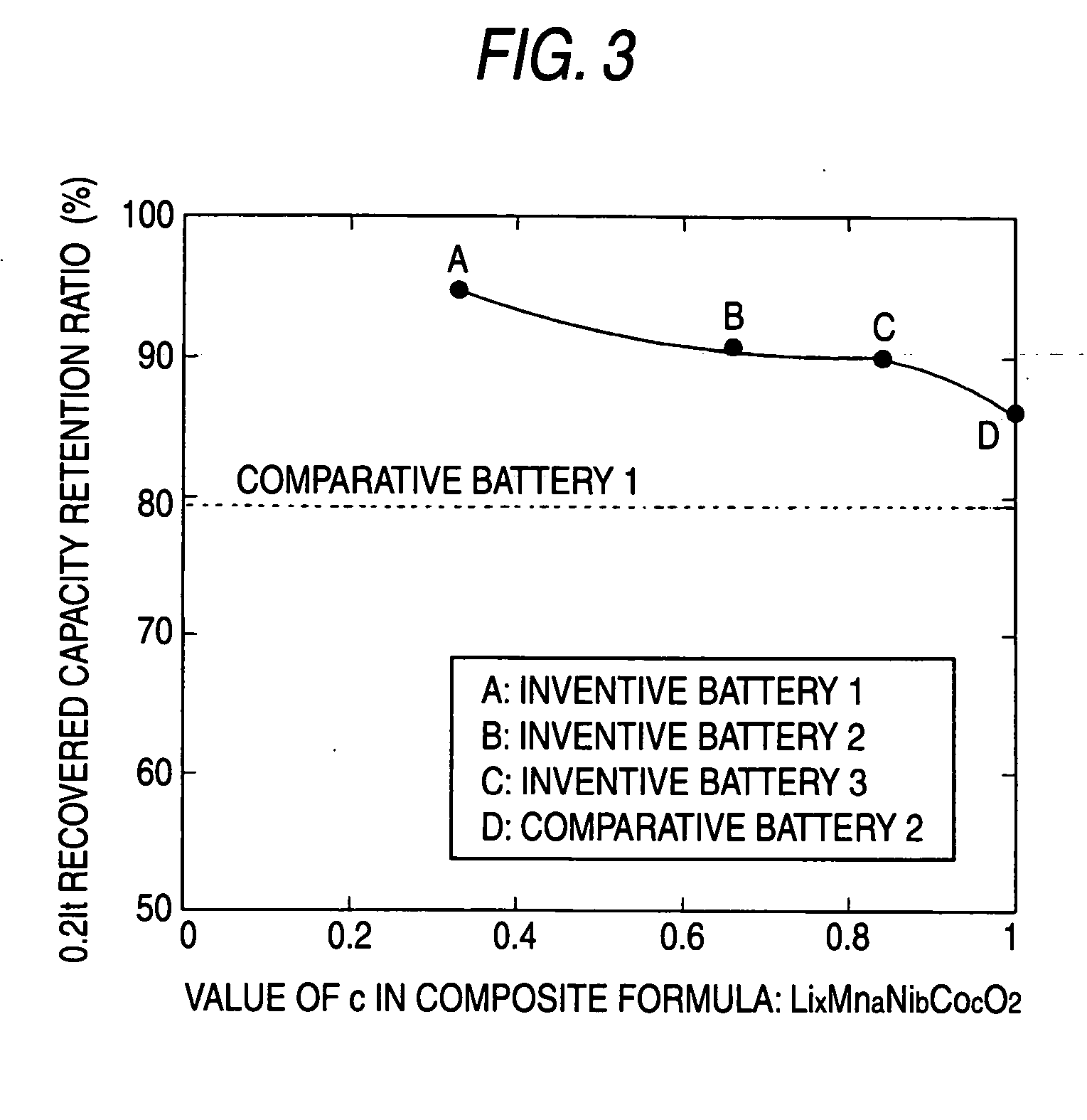Nonaqueous electrolyte cell
a technology of electrolyte cells and batteries, applied in the direction of non-aqueous electrolyte cells, cell components, electrochemical generators, etc., can solve the problems of insufficient discharge capacity recovery and battery swell, and achieve excellent lithium ion permeability, sufficient battery performance, and convenient charging.
- Summary
- Abstract
- Description
- Claims
- Application Information
AI Technical Summary
Benefits of technology
Problems solved by technology
Method used
Image
Examples
examples
[0092] The following will describe the invention in detail, but the invention should not be construed as being limited to these descriptions.
[0093] First, a process for synthesizing a composite oxide used as a positive active material A in the present Example.
[0094] Into a closed type reaction vessel was introduced 3 L (liter) of water. Thereto was added 32% aqueous sodium hydroxide solution so as to result in a pH of 11.6. A stirrer having paddle type stirring blades was used to stir the solution at 1,200 rpm and the temperature of the solution in the reaction vessel was kept at 50° C. with a heater. Argon gas was bubbled into the solution in the reaction vessel to remove dissolved oxygen.
[0095] A raw-material solution was prepared at room temperature (20° C.). The raw-material solution to be used in the Example was obtained by mixing an aqueous manganese sulfate (MnSO4) solution, an aqueous nickel sulfate (NiSO4) solution, an aqueous cobalt sulfate (COSO4) solution, and an aque...
PUM
 Login to View More
Login to View More Abstract
Description
Claims
Application Information
 Login to View More
Login to View More - R&D
- Intellectual Property
- Life Sciences
- Materials
- Tech Scout
- Unparalleled Data Quality
- Higher Quality Content
- 60% Fewer Hallucinations
Browse by: Latest US Patents, China's latest patents, Technical Efficacy Thesaurus, Application Domain, Technology Topic, Popular Technical Reports.
© 2025 PatSnap. All rights reserved.Legal|Privacy policy|Modern Slavery Act Transparency Statement|Sitemap|About US| Contact US: help@patsnap.com



